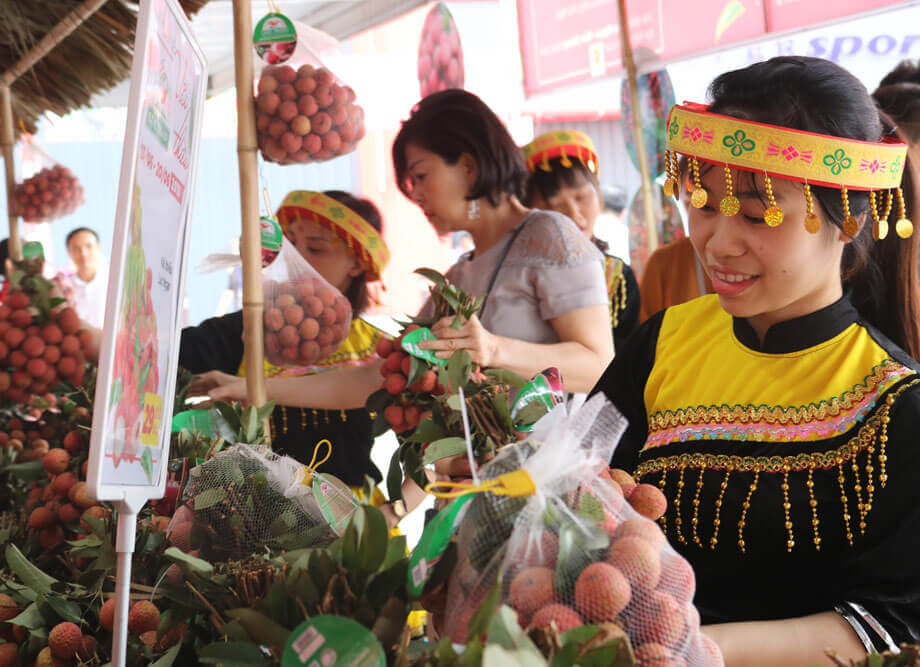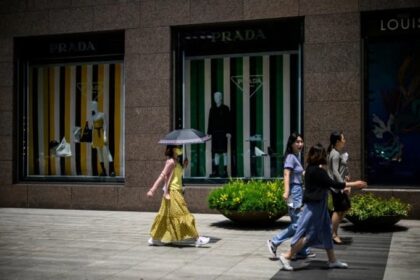The Rise of Lychee Tourism in Bac Giang
Each summer, the northern Vietnamese province of Bac Giang transforms into a vibrant hub of activity as its famed lychee orchards burst into color. Once known primarily for its agricultural output, Bac Giang is now drawing thousands of visitors eager to experience the region’s unique blend of fruit harvest, cultural heritage, and rural hospitality. The province’s innovative approach to combining agriculture with tourism is not only boosting local economies but also positioning Bac Giang as a model for sustainable rural development in Vietnam.
- The Rise of Lychee Tourism in Bac Giang
- What Makes Bac Giang’s Lychee Tourism Unique?
- Economic Impact: From Orchard to Marketplace
- Quality Standards and Global Reach
- Festivals and Cultural Events: More Than Just Fruit
- Digital Transformation: The Future of Tourism in Bac Giang
- Challenges and Opportunities
- Beyond Lychees: Exploring Bac Giang’s Broader Tourism Potential
- In Summary
With over 29,800 hectares of lychee cultivation and an estimated annual output exceeding 170,000 tonnes, Bac Giang is Vietnam’s undisputed lychee capital. The districts of Luc Ngan, Tan Yen, and Chu township are at the heart of this transformation, offering immersive experiences that go far beyond traditional fruit picking.
What Makes Bac Giang’s Lychee Tourism Unique?
Bac Giang’s approach to tourism is rooted in its agricultural heritage. Visitors are invited to step into the shoes of local farmers, participating in every stage of the lychee harvest. From picking and bundling fruit to chilling it in ice water and packaging it for export, tourists gain hands-on insight into the meticulous processes that have made Bac Giang lychees a global delicacy.
Experiential tours are carefully curated to showcase not only the fruit but also the region’s culture and natural beauty. In Luc Ngan, the “Luc Ngan Lychee – The Essence of Vietnamese Fruits” program offers a comprehensive look at lychee farming, including demonstrations of grafting and breeding techniques, exhibitions of traditional tools, and tastings of lychee-based dishes such as lychee and bitter melon soup, lychee smoothies, and even lychee wine.
Beyond the orchards, visitors can enjoy outdoor activities like camping, fishing, cycling, and kayaking on scenic lakes such as Cam Son—often referred to as a “miniature Ha Long Bay.” Cultural performances, including traditional music and Then singing by the Tay ethnic group, add a rich layer of local heritage to the experience.
Economic Impact: From Orchard to Marketplace
The integration of tourism with lychee production has had a significant economic impact on Bac Giang. In the past two years alone, Tan Yen district welcomed nearly 10,000 tourists during the lychee season, generating around 3 billion VND (nearly $115,000 USD) in tourism revenue. Province-wide, the 2023 lychee crop and related services brought in a record 6.87 trillion VND (about $286 million USD), with over half of the lychee output exported to international markets.
Luc Ngan district, home to the largest lychee-growing area, has become a focal point for both domestic and foreign visitors. Tour packages, often priced between 150,000 and 350,000 VND per person, include orchard visits, fruit tastings, local cuisine, and opportunities to learn about the region’s agricultural practices. The Garden Viet Cooperative in Thanh Hai ward, for example, has welcomed numerous tour groups, offering a full day of activities from lychee picking to kayaking and sampling regional specialties like ant egg cake and roast pork.
Local authorities are investing in hospitality training for farmers, upgrading orchard facilities, and developing new experiential tours to meet growing demand. Communes such as Thanh Hai, Giap Son, Ho Dap, Tan Moc, and Tan Son are being prioritized for community tourism development, ensuring that the benefits of tourism are widely shared.
Quality Standards and Global Reach
Bac Giang’s success in both tourism and export markets is underpinned by its commitment to quality. The province maintains strict adherence to VietGAP (Vietnamese Good Agricultural Practices) and GlobalGAP (global standards for safe and sustainable agriculture) across thousands of hectares. These certifications not only ensure food safety and environmental sustainability but also open doors to lucrative international markets.
Currently, Bac Giang has over 300 export-eligible growing area codes, with lychees protected by trademark and geographical indication in eight countries, including China, the US, Japan, Australia, South Korea, Singapore, Laos, and Cambodia. The fruit is exported to more than 30 countries and territories, consistently praised for its exceptional taste and safety standards.
Despite challenges such as fluctuating yields due to weather and pests, Bac Giang’s lychee prices have remained strong, reflecting robust demand both domestically and abroad. In 2024, farm prices ranged from 55,000 to 90,000 VND per kilogram—three times higher than the previous year—underscoring the fruit’s premium status.
Festivals and Cultural Events: More Than Just Fruit
To further promote lychee tourism, Bac Giang hosts a variety of festivals and cultural events. The annual Luc Ngan Lychee Festival, for example, draws thousands of visitors with its immersive activities, including lychee harvesting competitions, culinary demonstrations, and exhibitions of traditional farming tools. A highlight of the festival is the recognition of outstanding lychee farmers and a costume contest celebrating the fruit’s cultural significance.
These events are designed not only to attract tourists but also to honor the region’s agricultural heritage and foster community pride. Local authorities work closely with cooperatives, businesses, and digital platforms to promote these festivals, leveraging social media and livestreaming to reach wider audiences.
Digital Transformation: The Future of Tourism in Bac Giang
Recognizing the importance of technology in modern tourism, Bac Giang is investing heavily in digital transformation. The province aims to welcome up to three million tourists in 2025 by developing a smart tourism ecosystem that incorporates artificial intelligence, virtual reality (VR), and digital marketing.
Initiatives include the digitization of cultural heritage sites, the creation of VR360-degree tours, and the integration of QR codes at tourist locations for easy access to information. The Bac Giang Digital Tourism Information Portal provides comprehensive details on attractions, accommodations, and local cuisine, while mobile applications help visitors plan their itineraries and navigate the region efficiently.
Social media platforms like TikTok and Facebook are being used to promote lychee tourism, with Farm Tours and Mega Live events connecting online audiences with real-time experiences in the orchards. These efforts not only enhance the visitor experience but also support local farmers and businesses by expanding their reach to new markets.
Challenges and Opportunities
While Bac Giang’s lychee tourism has achieved remarkable success, challenges remain. Infrastructure in some areas is still underdeveloped, with limited accommodations and entertainment services. The province is addressing these issues by investing in road upgrades, expanding tourism facilities, and providing training for local guides and service providers.
Another challenge is maintaining the delicate balance between tourism growth and environmental sustainability. The adoption of VietGAP and GlobalGAP standards, along with integrated pest management and sustainable farming practices, is helping to mitigate the impact of increased visitor numbers on the local ecosystem.
Looking ahead, Bac Giang’s strategic roadmap for tourism development aims to transform the sector into a key economic driver by 2030. Plans include the establishment of large-scale tourism and service areas, the preservation of cultural and natural heritage, and the promotion of community-based and eco-tourism models.
Beyond Lychees: Exploring Bac Giang’s Broader Tourism Potential
While lychee tourism is the current star, Bac Giang’s appeal extends far beyond its orchards. The province boasts nearly 2,300 historical sites, including the ancient citadel of Bac Giang, the Yen The peasant uprising relic, and the UNESCO-recognized Vinh Nghiem Pagoda. Natural attractions such as Suoi Mo scenic area, Khuon Than Lake, and Ba Tia Waterfall offer opportunities for eco-tourism and adventure travel.
The region’s diverse ethnic communities, including the Tay, Nung, Hoa, San Diu, and San Chi, contribute to a rich cultural tapestry that is reflected in local festivals, cuisine, and traditional arts. Community tourism initiatives are being developed to showcase these unique cultural assets, providing visitors with authentic experiences and supporting local livelihoods.
Strategic partnerships with neighboring provinces and international organizations are also being pursued to enhance Bac Giang’s profile as a tourism destination. Efforts to secure UNESCO World Heritage recognition for key sites are underway, further elevating the province’s status on the global stage.
In Summary
- Bac Giang has successfully transformed its lychee harvest into a major tourism attraction, drawing thousands of visitors each summer.
- Experiential tourism programs offer hands-on participation in lychee farming, cultural performances, and outdoor activities.
- The integration of tourism with agriculture has significantly boosted local economies and created new opportunities for farmers.
- Strict adherence to VietGAP and GlobalGAP standards ensures high-quality lychees for both domestic and international markets.
- Festivals, digital transformation, and strategic marketing are key to promoting Bac Giang’s lychee tourism and expanding its reach.
- Challenges such as infrastructure and sustainability are being addressed through targeted investments and community engagement.
- Bac Giang’s broader tourism potential includes historical sites, natural landscapes, and rich cultural heritage, positioning it as a leading destination in northern Vietnam.












